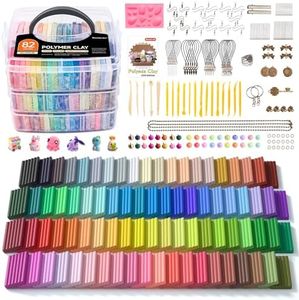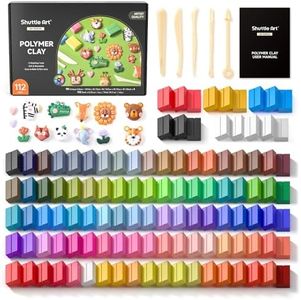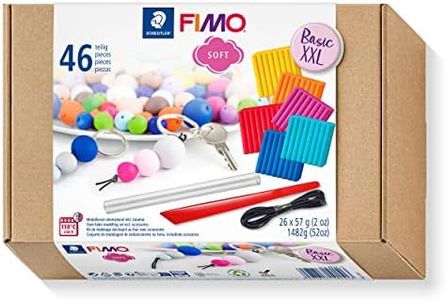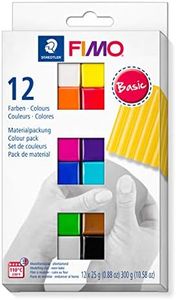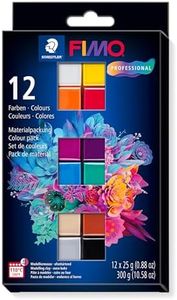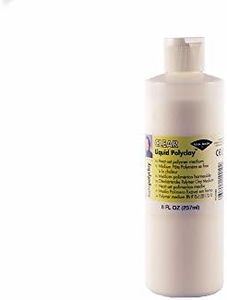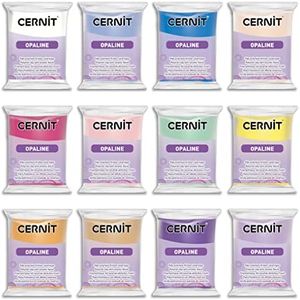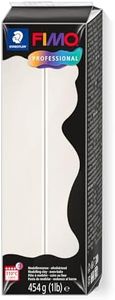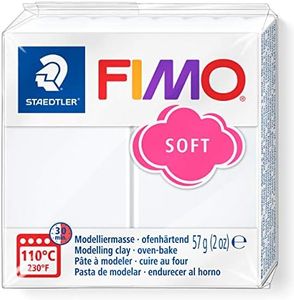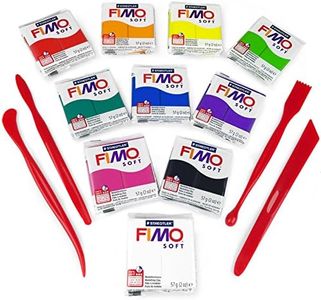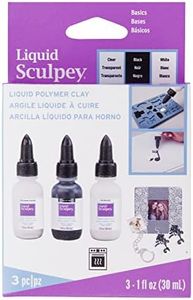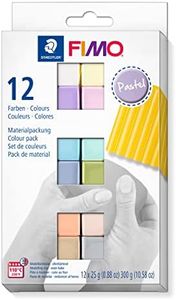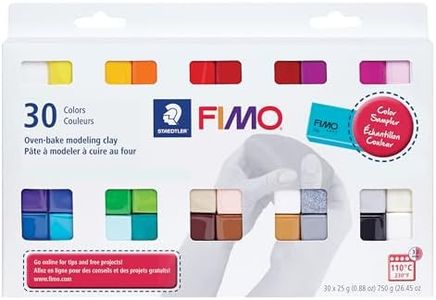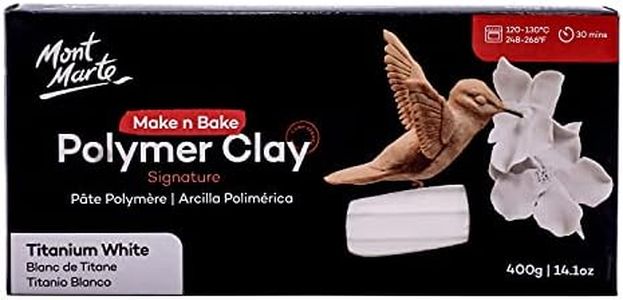We Use CookiesWe use cookies to enhance the security, performance,
functionality and for analytical and promotional activities. By continuing to browse this site you
are agreeing to our privacy policy
10 Best Polymer Clay
From leading brands and best sellers available on the web.Buying Guide for the Best Polymer Clay
Choosing the right polymer clay is important whether you’re a beginner, hobbyist, or experienced artist. There are several types and brands available, each with different features to consider. The best way to pick the right polymer clay is by thinking about your project’s needs, such as flexibility, durability, ease of use, and the finish you desire. Understanding what different specs mean can help you find a clay that fits your goals, whether you want to make jewelry, figurines, or decorative items.Firmness/SoftnessFirmness or softness refers to how easy the clay is to shape with your hands. Softer clays are easier to mold and blend, which is great for detailed sculpting or for those new to polymer clay. Firmer clays hold their shape better, which is useful when making items that need crisp details or stand firmly. If you have weaker hands or are working with children, softer clay is a good choice. If you want sharp edges and are comfortable with kneading, go for firmer clay.
Baking TemperatureThis is the temperature at which you cure or harden the clay in your oven. Most polymer clays require baking at temperatures between 110°C to 130°C (230°F to 266°F). Lower temperatures typically mean the clay is more forgiving and less likely to burn, while higher temperatures can make the finished piece tougher. Always check your oven’s accuracy, and follow the instructions closely so your pieces don’t burn or stay soft. Pick a clay with a baking temperature that matches your oven’s capabilities for best results.
Color RangeThe color range refers to how many pre-mixed colors are available and how well they mix together. Some brands offer a wide variety of vibrant colors, while others are limited but designed to be easily blended. If you love working with lots of colors or can’t easily blend clays, choose a brand with a wide selection. If you enjoy custom-mixing and creating your own shades, you can opt for clays with a more limited palette.
Finish After BakingThis describes how the clay looks and feels after being baked. Some clays turn matte, others are glossy, semi-glossy, or even translucent. Consider what look you want: for a natural or stone-like appearance, choose a matte finish; for jewelry or shiny pieces, a glossy finish may be more suitable; and for delicate, light-catching effects, look for translucent varieties. Your project’s purpose—whether decorative or functional—can help you decide.
Durability and FlexibilityNot all polymer clays are equally strong. Some clays, once baked, become very rigid; others retain some flexibility, which is useful for thin pieces or items like earrings that might bend. If your projects are likely to experience wear and tear or need to be flexible, select a more flexible clay. For static pieces like figurines or sculptures, hardness may be your priority.
Ease of ConditioningConditioning is the process of kneading clay to make it smooth and workable. Some clays require more effort and warming up, while others soften quickly. If you want to spend less time preparing your clay or have limited hand strength, opt for a clay that’s easy to condition. Those who enjoy the process or don’t mind some extra work can select firmer types.

